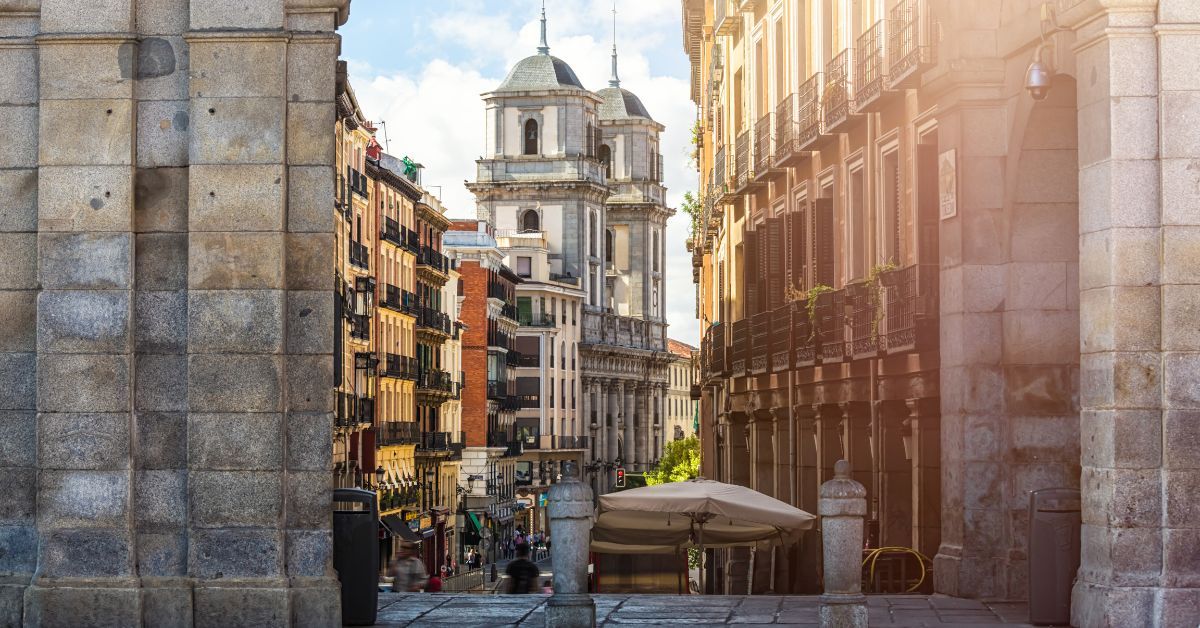
Restaurants with history in Madrid: tradition, flavour and the essence of the city
Madrid is a city with centuries of history that can be savoured in every corner, especially in its oldest and most iconic restaurants. Some of these establishments have seen generations of Madrileños and tourists come and go, and continue to serve dishes that are part of the city’s gastronomic soul. Eating at one of these historic restaurants is not only a delight for the palate, but also an experience that connects you with the roots and memory of Madrid.
In this article, we will take a tour of the best restaurants with history in Madrid: from centuries-old taverns to aristocratic dining rooms, passing through spaces that preserve the essence of past eras and offer much more than just good food. Here you will find where to eat, have lunch or dinner while enjoying the capital.
Where to eat in historic restaurants in Madrid
For those who want to savour history without sacrificing good taste, Madrid offers a wide range of restaurants with decades—even centuries—of history. These establishments are not just places to eat well; you will love their premises, which will transport you back in time.
Did you know that the oldest restaurant in the world, according to the Guinness Book of Records, is in Madrid? Casa Botín was founded in 1725 and has preserved its original wood-fired oven and a traditional menu focused on suckling pig and roast lamb. Located next to La Plaza Mayor, it is undoubtedly one of the best dining experiences in Madrid.
Another gem is Lhardy, founded in 1839, which first introduced the concept of a restaurant in Madrid. Located near Carrera de San Jerónimo, this elegant establishment offers dishes such as sherry consommé and stewed partridge, served in period rooms that retain mirrors, fine woods and service from another era.
Taberna La Bola, opened in 1870, is another example of well-preserved tradition. Famous for its Madrid-style stew cooked in a clay pot over charcoal, its authentic and cosy atmosphere makes it an essential stop for lovers of Madrid cuisine with history.
Old and iconic restaurants in Madrid
Madrid’s old restaurants are not just surviving: they are true pillars of the city’s character and gastronomy. These establishments are valued both for their legacy and for their steadfast commitment to traditional recipes, original décor and a philosophy that prioritises authenticity.
Café Gijón, founded in 1888, is one of Spain’s most iconic literary cafés. Its tables have been graced by figures ranging from Benito Pérez Galdós to Ana María Matute. Today, it continues to be a meeting place for artists, intellectuals and tourists, offering a menu of traditional Spanish cuisine and an unmistakable atmosphere.
In the heart of the Las Letras neighbourhood, Casa Alberto has been serving traditional tapas and stews since 1827. This is where the famous oxtail stew was born, which has become one of its star dishes. Its tin bar, red walls and tiled floor evoke 19th-century Madrid.
Also iconic is Malacatín, open since 1895. This tavern is synonymous with Madrid-style stew, and even today it retains its family atmosphere and wooden tables. Visiting Malacatín is like opening a window onto the Madrid of our grandparents.
Restaurants with historical tradition in Madrid
Tradition cannot be improvised: it is built over time, with recipes passed down from generation to generation, with establishments that keep the essence of an era alive. In Madrid, some restaurants have managed to make their history part of their gastronomic offering.
Casa Lucio, opened in 1974 but the direct heir to another historic tavern called El Segoviano, is internationally renowned for its huevos rotos (scrambled eggs with bacon). Although not as old as others, its link to tradition and its illustrious clientele (kings, politicians, actors) have given it a legendary aura. You can find it in the iconic La Latina neighbourhood.
Another example is La Posada de la Villa, which opened in the 17th century as a flour mill and today operates as a charming traditional restaurant. Its cuisine is based on roasts and traditional Madrid dishes, such as tripe, roast lamb and Madrid-style cod, all served in a setting that preserves the beams, bricks and soul of the old town.
Also noteworthy is Los Galayos, in the Plaza Mayor since 1894. With a history linked to political, cultural and bullfighting gatherings, it offers cuisine that has managed to adapt without losing its Castilian roots. It is the ideal place to experience Madrid with every bite.
Historical experiences in Madrid
Eating at a restaurant with history goes beyond the food: it is a complete experience, from the décor to the service, from the flavours of the past to the conversations that once took place at those same tables. Some restaurants in Madrid have deliberately chosen to offer these experiences, paying attention to even the smallest details.
Café de Oriente, overlooking the Royal Palace, combines classic elegance with modern cuisine. Its underground rooms still preserve archaeological remains of the old convent of San Gil. Dining here means enjoying imperial Madrid with 21st-century comfort.
In the Chamberí neighbourhood, Casa Macareno recaptures the spirit of early 20th-century taverns. Original tiles, antique lamps and a menu that respects traditional market cuisine make it a gem for those seeking an authentic Madrid experience.
Another very special historical experience is offered by La Trainera, a seafood restaurant in the heart of the Salamanca neighbourhood, founded in 1966. Its walls are decorated with antique nautical maps and maritime memorabilia, and its menu of fresh fish and seafood is recognised as one of the best in the city.
Eating at historic places in Madrid
A night out in Madrid can also have a taste of history. Many of these historic restaurants transform during dinner, offering a unique atmosphere that combines soft lighting with the sound of conversations between walls that have heard thousands of stories.
Delic, located opposite the church of San Andrés in La Latina, is housed in a historic building and retains all the essence of old Madrid. Ideal for a casual meal with a bohemian touch, its menu blends traditional Spanish cuisine with international dishes.
Another special place to eat is El Paraguas, in the Salamanca district. Although more recent (opened in 2004), it has built a reputation for exclusivity and elegance, inspired by Asturian haute cuisine and decorated with fine woods, classic tableware and an attention to detail reminiscent of restaurants of yesteryear.
For a more theatrical experience, La Taberna del Alabardero is an excellent choice. Located in a 19th-century palace, just a few steps from the Teatro Real, it offers meals that combine spectacle and flavour in an elegant and very Madrid-style setting.
Places with history to have lunch in Madrid
Madrid is full of historic spots where lunch becomes a unique experience. Some restaurants combine a long history with well-crafted daily menus, ideal for a break with a taste of tradition.
La Ardosa, founded in 1892, is famous for its potato omelettes, croquettes and draught vermouth. Although small, it is one of the most authentic places to have lunch in the centre of Madrid, especially if you want to soak up its traditional atmosphere.
In the heart of El Rastro is El Imparcial, a restaurant located in an old neoclassical palace converted into a gastronomic and cultural space. Its menu changes every season, but it always respects quality products and a calm and refined atmosphere.
And if you’re looking to have lunch in one of Madrid’s most emblematic and historic places, the Royal Palace, Café de la Galería is your best option. You can choose between brunch or the wide variety of dishes on the menu that are sure to impress.
Madrid is a city where history is not only seen in its streets, museums and monuments, but also tasted in its restaurants. Eating in establishments that are decades or even centuries old not only nourishes the body, but also the soul and memory. These historic restaurants are not only witnesses to the past, but living spaces that continue to welcome diners with the same warmth and tradition as generations ago.

